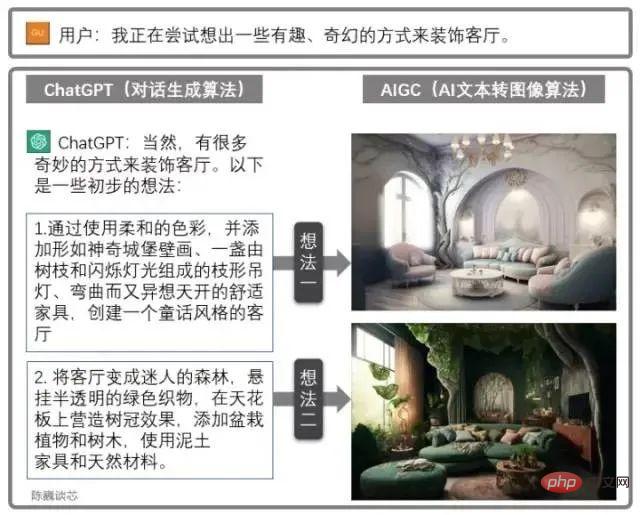
Analysis of the concept and principle of PHP value passing
In PHP programming, value passing is a commonly used parameter passing method. Before understanding the concept and principle of value passing, let's first understand the variable passing method in PHP. Variable passing methods in PHP are mainly divided into value passing and reference passing.
- The concept of value passing:
In value passing, when a variable is passed as a parameter to a function, what is actually passed is the variable value, not the variable itself. This means that any changes to parameters inside the function will not affect variables outside the function. The principle of value transfer is to copy the value of the variable and pass it to the function. The function operates on the copied value without affecting the original variable.
- Principle of value transfer:
The following uses a simple example to illustrate the principle of value transfer. Suppose there is a function increment($num), which adds 1 to the passed parameter and outputs the result:
function increment($num) {
$num++;
echo $num;
}
$num = 5;
increment($num);
echo $num;Execute the above code, the output result will be:
6 5
You can see that although the parameter $num is added by 1 inside the function, this operation does not affect the value of the $num variable outside the function. This is how passing by value works.
Value passing is the default delivery method in PHP. If the parameters are not specifically specified to be passed by reference, then the parameters will be passed by value.
- Specific code examples of value transfer:
Let’s look at a slightly more complex example below to show specific code examples of value transfer. We define a function modifyArray($arr), which adds elements to the incoming array and outputs the modified array:
function modifyArray($arr) {
$arr[] = "new element";
print_r($arr);
}
$array = array("element1", "element2");
modifyArray($array);
print_r($array);Execute the above code, and the output result will be:
Array
(
[0] => element1
[1] => element2
[2] => new element
)
Array
(
[0] => element1
[1] => element2
)You can see that although the "new element" is added to the passed array $array inside the function, this operation is only for $arr## inside the function. # The variable is operated and does not affect the $array variable outside the function.
The above is the detailed content of Analysis of the concept and principle of PHP value passing. For more information, please follow other related articles on the PHP Chinese website!
 趣谈ChatGPT原理及算法Apr 27, 2023 pm 08:46 PM
趣谈ChatGPT原理及算法Apr 27, 2023 pm 08:46 PM去年12月1日,OpenAI推出人工智能聊天原型ChatGPT,再次赚足眼球,为AI界引发了类似AIGC让艺术家失业的大讨论。ChatGPT是一种专注于对话生成的语言模型。它能够根据用户的文本输入,产生相应的智能回答。这个回答可以是简短的词语,也可以是长篇大论。其中GPT是GenerativePre-trainedTransformer(生成型预训练变换模型)的缩写。通过学习大量现成文本和对话集合(例如Wiki),ChatGPT能够像人类那样即时对话,流畅的回答各种问题。(当然回答速度比人还是
 深入解析MySQL MVCC 原理与实现Sep 09, 2023 pm 08:07 PM
深入解析MySQL MVCC 原理与实现Sep 09, 2023 pm 08:07 PM深入解析MySQLMVCC原理与实现MySQL是目前最流行的关系型数据库管理系统之一,它提供了多版本并发控制(MultiversionConcurrencyControl,MVCC)机制来支持高效并发处理。MVCC是一种在数据库中处理并发事务的方法,可以提供高并发和隔离性。本文将深入解析MySQLMVCC的原理与实现,并结合代码示例进行说明。一、M
 深入解析Struts2框架的工作原理与实现方式Jan 05, 2024 pm 04:08 PM
深入解析Struts2框架的工作原理与实现方式Jan 05, 2024 pm 04:08 PM解读Struts2框架的原理及实现方式引言:Struts2作为一种流行的MVC(Model-View-Controller)框架,被广泛应用于JavaWeb开发中。它提供了一种将Web层与业务逻辑层分离的方式,并且具有灵活性和可扩展性。本文将介绍Struts2框架的基本原理和实现方式,同时提供一些具体的代码示例来帮助读者更好地理解该框架。一、框架原理:St
 Golang实现继承方法的基本原理和方式Jan 20, 2024 am 09:11 AM
Golang实现继承方法的基本原理和方式Jan 20, 2024 am 09:11 AMGolang继承方法的基本原理与实现方式在Golang中,继承是面向对象编程的重要特性之一。通过继承,我们可以使用父类的属性和方法,从而实现代码的复用和扩展性。本文将介绍Golang继承方法的基本原理和实现方式,并提供具体的代码示例。继承方法的基本原理在Golang中,继承是通过嵌入结构体的方式实现的。当一个结构体嵌入另一个结构体时,被嵌入的结构体就拥有了嵌
 深入探究Maven生命周期的功能和机制Jan 04, 2024 am 09:09 AM
深入探究Maven生命周期的功能和机制Jan 04, 2024 am 09:09 AM深入理解Maven生命周期的作用与原理Maven是一款非常流行的项目管理工具,它使用一种灵活的构建模型来管理项目的构建、测试和部署等任务。Maven的核心概念之一就是生命周期(Lifecycle),它定义了一系列阶段(Phase)和每个阶段的目标(Goal),帮助开发人员和构建工具按照预定的顺序执行相关操作。Maven的生命周期主要分为三套:Clean生命周
 PHP 防抖和防重复提交技术的原理与应用Oct 12, 2023 pm 12:16 PM
PHP 防抖和防重复提交技术的原理与应用Oct 12, 2023 pm 12:16 PMPHP防抖和防重复提交技术的原理与应用随着互联网的发展,用户在进行网页操作时,往往会出现频繁点击或重复提交的情况,这会给系统带来一定的负担和安全隐患。为了解决这一问题,开发人员通常会采用防抖和防重复提交技术。本文将介绍PHP中防抖和防重复提交技术的原理,并给出相应的代码示例。一、防抖技术的原理与应用防抖技术旨在解决用户频繁点击或操作的问题,通过延迟执行或合
 深入理解Java反射机制的原理与应用Dec 23, 2023 am 09:09 AM
深入理解Java反射机制的原理与应用Dec 23, 2023 am 09:09 AM深入理解Java反射机制的原理与应用一、反射机制的概念与原理反射机制是指在程序运行时动态地获取类的信息、访问和操作类的成员(属性、方法、构造方法等)的能力。通过反射机制,我们可以在程序运行时动态地创建对象、调用方法和访问属性,而不需要在编译时知道类的具体信息。反射机制的核心是java.lang.reflect包中的类和接口。其中,Class类代表一个类的字节
 了解PHP底层开发原理:基础知识和概念介绍Sep 10, 2023 pm 02:31 PM
了解PHP底层开发原理:基础知识和概念介绍Sep 10, 2023 pm 02:31 PM了解PHP底层开发原理:基础知识和概念介绍作为一名PHP开发者,了解PHP底层开发原理是非常重要的。正因为如此,本文将介绍PHP底层开发的基础知识和概念,帮助读者更好地理解和应用PHP。一、什么是PHP?PHP(全称:HypertextPreprocessor)是一门开源的脚本语言,主要用于Web开发。它可以嵌入到HTML文档中,通过服务器解释执行,并生成


Hot AI Tools

Undresser.AI Undress
AI-powered app for creating realistic nude photos

AI Clothes Remover
Online AI tool for removing clothes from photos.

Undress AI Tool
Undress images for free

Clothoff.io
AI clothes remover

AI Hentai Generator
Generate AI Hentai for free.

Hot Article

Hot Tools

SublimeText3 Linux new version
SublimeText3 Linux latest version

Notepad++7.3.1
Easy-to-use and free code editor

Atom editor mac version download
The most popular open source editor

WebStorm Mac version
Useful JavaScript development tools

ZendStudio 13.5.1 Mac
Powerful PHP integrated development environment






